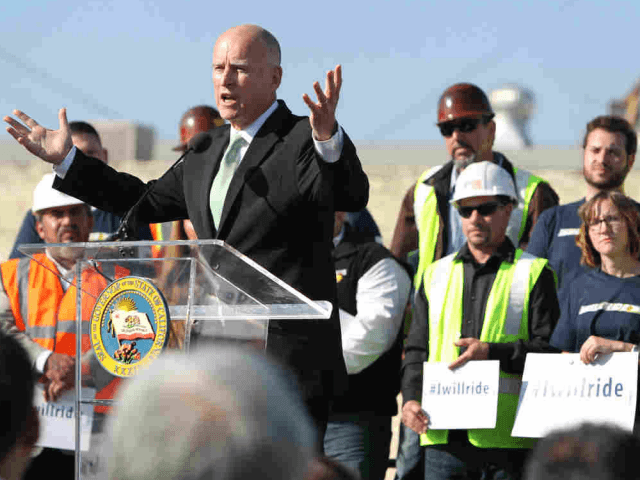California state officials may betray the promise they made to Southern Californians that the projected $68 billion bullet train’s first completed section would run from Burbank to the Central Valley.
Instead, allowing that the cost of crossing the Tehachapi and San Gabriel mountains with tunnels and aerial structures would slow the project, state rail authority officials are considering building the first section of the route from San Jose to Bakersfield, according to the Los Angeles Times.
The decision by rail authority officials will be revealed in the state’s forthcoming 2016 Business Plan, which will contain the most complete update for the bullet train since 2012.
Frightened that the train will not be able to elicit more funding because of delays, as the project is running two years behind schedule, and a 2013 cost estimate by Parsons Brinckerhoff asserted that the Merced to San Fernando Valley section would cost $9 billion more than previously estimated, the rail authority queried private investors last summer whether they preferred an initial operating system from the south or the north.
KCRA 3 reported in December that rail authority Chief Executive Jeff Morales said the agency was re-evaluating which section of the line would be the first to offer passenger service, acknowledging his staff was considering the section between San Jose and Bakersfield.
Rail authority spokeswoman Lisa Marie Alley argued that the authority never fully committed to a south-first plan, stating, “The option to do an initial operating segment north has always been there.”
Yet Governor Jerry Brown clearly stated in his 2012 State of the State address that the first leg of the train’s route would run from the Central Valley to Union Station in Los Angeles, saying, “The first phase will get us from Madera to Bakersfield. Then we will take it through the Tehachapi Mountains to Palmdale, constructing 30 miles of tunnels and bridges. The first rail line through those mountains was built in 1874, and its top speed over the crest is still 24 miles an hour. Then we will build another 33 miles of tunnels and bridges before we get the train to its destination at Union Station in the heart of Los Angeles.”
Brown ignored the bullet train in his 2016 State of the State speech; he had spoken of it in every State of the State address since 2012.
The possible betrayal of Southern California would follow the rail authority’s agreement with Burbank to fund $800,000 to explore a site for a future station, after rail authority officials urged Burbank to eschew selling an area of land at its airport so the train’s route could use it.
In other transportation news–perhaps favoring Northern California–Caltrans scored a significant victory in its battle to save the Bay Bridge; the San Francisco Chronicle reported that according to Caltrans structures maintenance engineer Ken Brown, industrial-grade caulk, which runs $40 a tube, was used to seal the joint between the asphalt road surface and the guardrails, thus fixing roughly 90 percent of the leaks plaguing the bridge.
The solution was found after Caltrans had spent over $1.4 million trying to fix the leaks from the cable of the Bay Bridge’s new eastern span. Brown reported, “In the last couple of storms, we have not seen any water coming. We are trying to go out after every storm to see what more leaks. These bridges are not designed to be watertight. But we are getting a lot closer to where we want.” The caulking will cost less than $100,000 and have to be reapplied roughly every seven years, a far cry from the previous expenditure of $1.4 million.

COMMENTS
Please let us know if you're having issues with commenting.